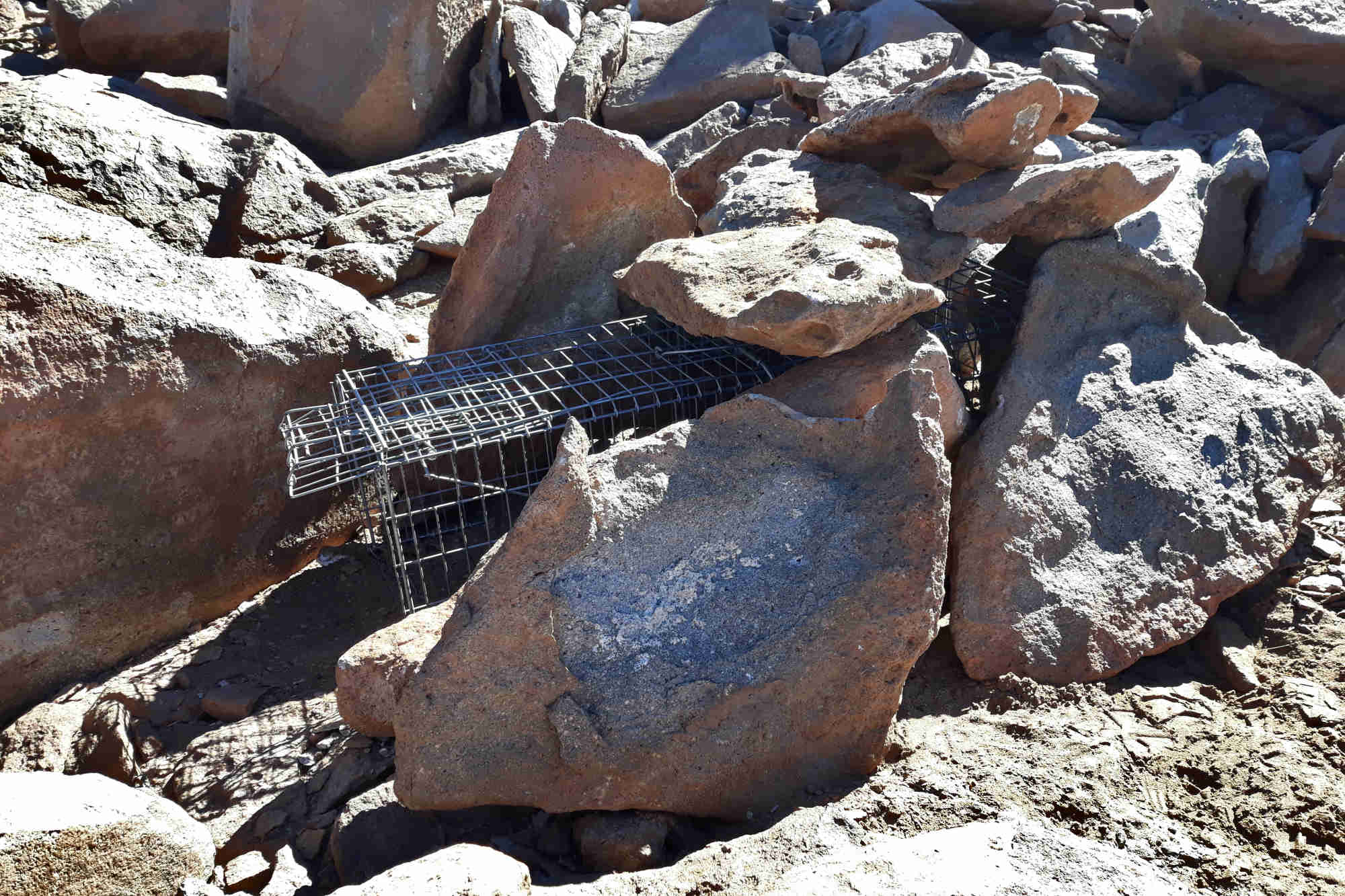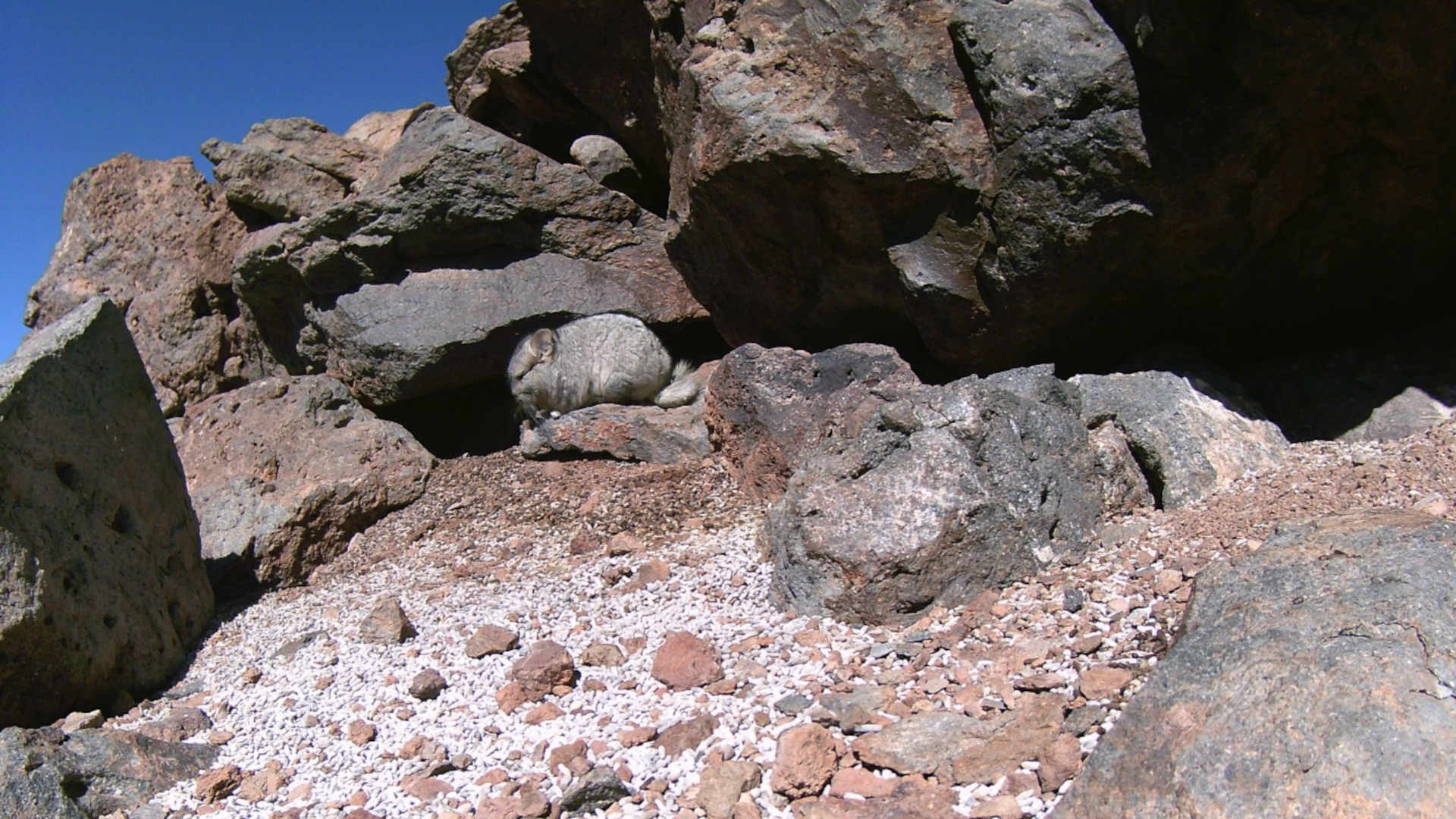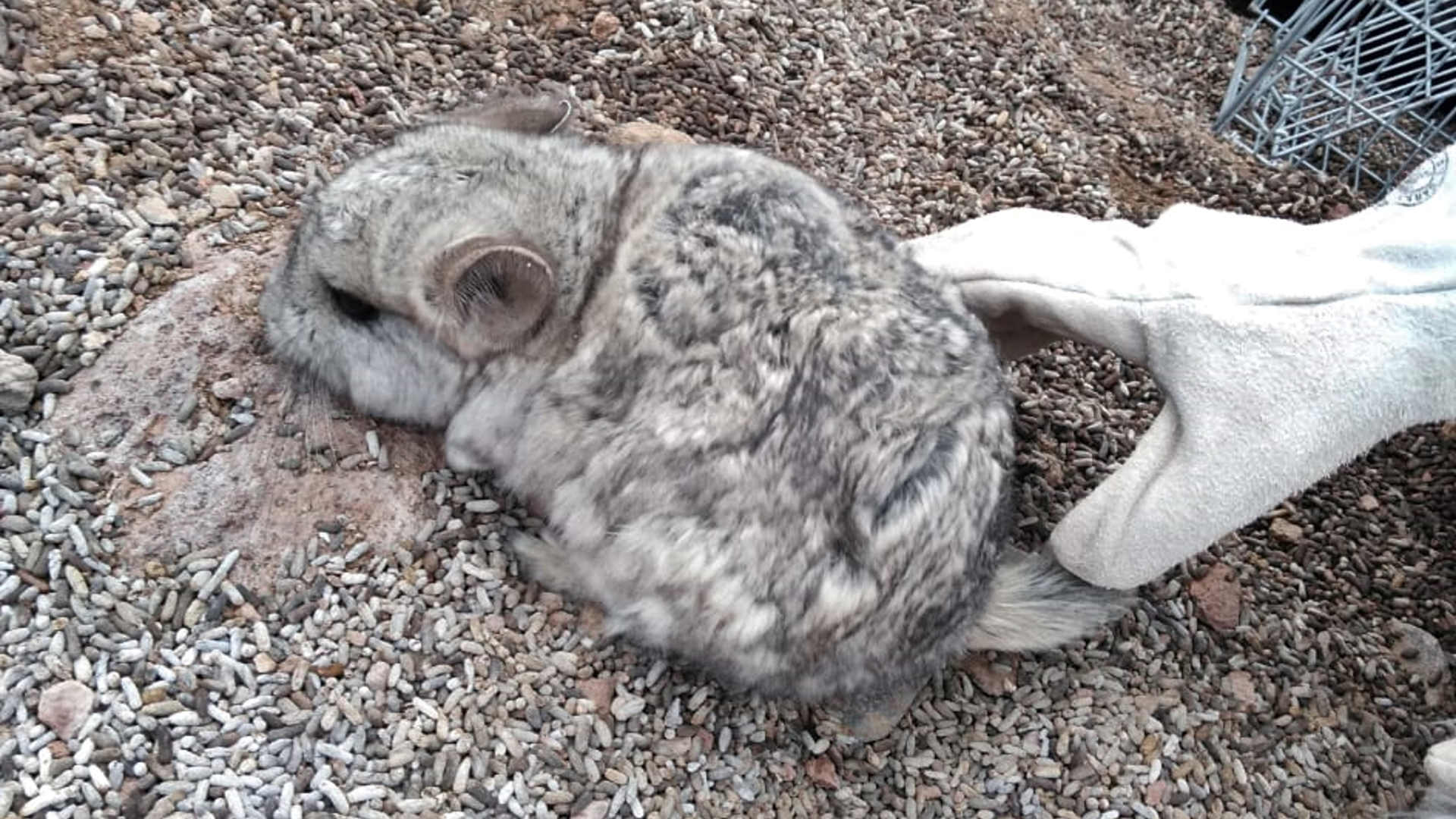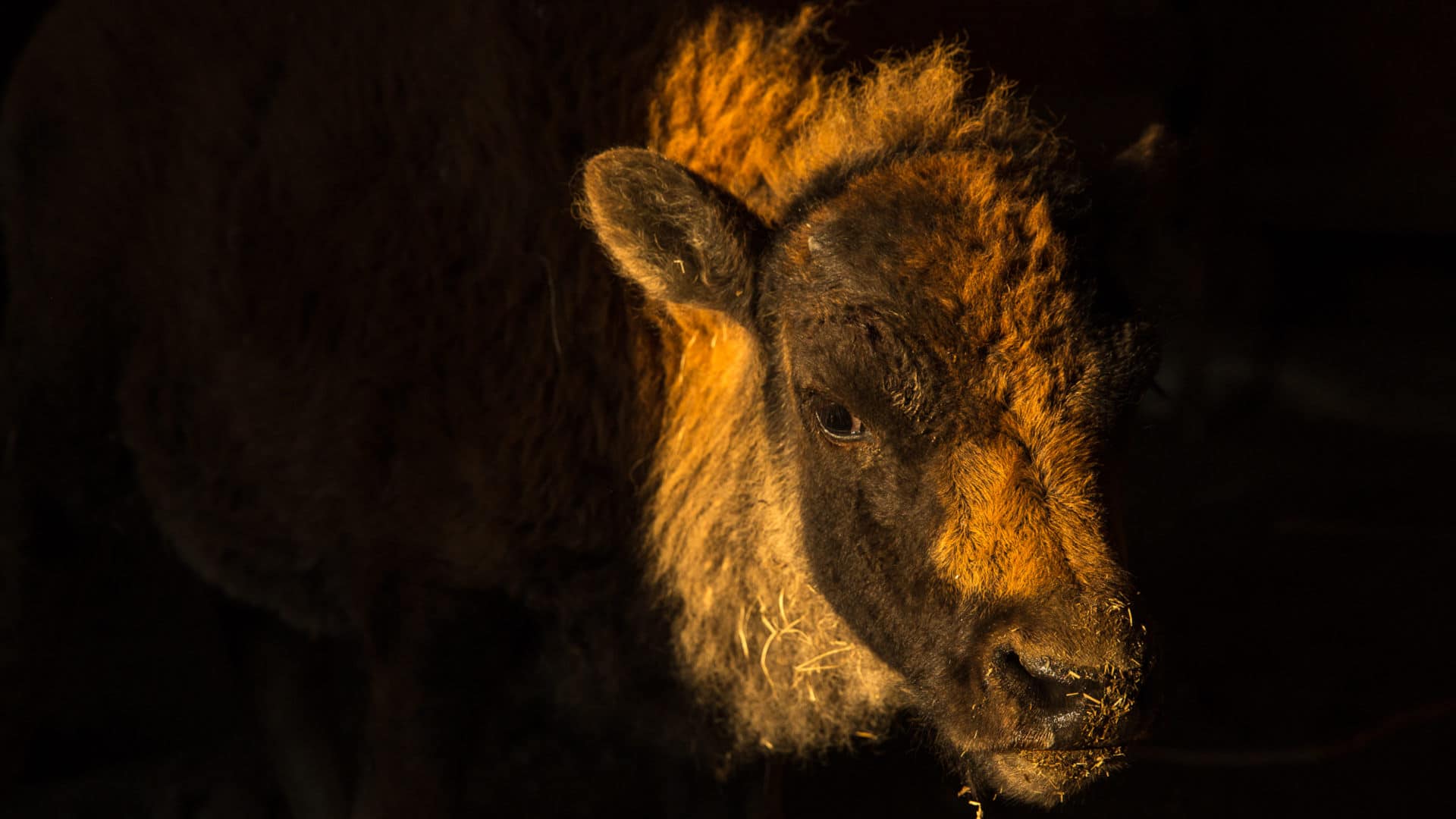A High-Stakes Chinchilla Relocation Effort Stalls
Last August, high in the Andes Mountains of northern Chile, the South African mining group Gold Fields launched an operation to relocate some 25 endangered short-tailed chinchillas. Once hunted nearly to extinction for their prized fur, the endangered rodents are now protected by Chilean law. This particular colony lives atop 3.5 million ounces of extractable gold.
After years of acquiring permits, conducting studies, and developing protocols in conversation with Chilean regulators, Gold Fields received the all-clear in 2020 to move the chinchillas three miles away, to a similar site. Doing so would make way for part of the $860-million mine construction project — although, one small-mammal trapping expert told Undark last year, the plan held risks for the animals.
Indeed, initial attempts have not followed the script.
Of the first four animals live-trapped and moved to temporary enclosures — a phase deemed necessary to allow the rodents to acclimatize to their new habitat — two died. Of the surviving two, one suffered a serious leg injury but recovered. The two chinchillas have since been released into the wild, and the company says they are doing well.
The death and injury rate, though, alarmed regulators. In November, about three months after the $400,000 relocation project began, Chilean authorities ordered the exercise to halt, and instructed Gold Fields to undertake a range of new measures that sends the project back to the drawing board. An announcement from the government about the future of the project appears to be imminent. Meanwhile, construction of the mine has commenced.
The stakes are high. Gold Fields says the initial construction phase is unaffected, and the first gold should be produced by the end of 2022. But expansions of the pit beyond that date will be uncertain if all of the animals have not been relocated. And analysts say the project is under the microscope of public opinion and regulatory attention, as part of a larger shift in the global mining industry toward more scrutiny of social and environmental impacts.
According to the plan laid out in advance by the environmental manager overseeing the project, the chinchillas were captured in the wild with a device called a Tomahawk trap, which closes behind the animal after it enters. That initial stage seems to have gone smoothly, with no reported issues. But problems arose soon after.
The team captured the first animal on Oct. 11, according to detailed reports filed to Chilean regulators. They fitted it with a radio collar and placed it in an enclosure — similar to a chicken coop with mesh fencing — in its new habitat. There, they hoped, it could adjust to its surrounding before a full release. The animal, according to the report, was “continually monitored via in-person inspections by the veterinarians in charge of the activity, as well as the use of three camera traps.”
Eight days later, experts monitoring the animal noticed it limping. The next day, investigators found drops of blood in the enclosure. A checkup on Oct. 22 showed that the leg was possibly fractured; the chinchilla had also lost weight.
That animal survived. Another chinchilla, captured on Oct. 27, was less fortunate. Less than three weeks later, in the afternoon, specialists monitoring the enclosure noted that the chinchilla appeared to be in poor condition. Soon after, according to the official reports, Gold Fields’ legal representative called the Atacama office of the Chilean environmental regulator with news: The chinchilla had died. Three days later, in the morning, staff found another chinchilla dead in its enclosure, with no obvious wounds.

In the report regarding the deaths of the two animals, it is clear the operation was intensely monitored, and it appears that the company immediately reported the deaths and injury. Neither the company nor regulators have released necropsy reports detailing the exact causes of the animals’ deaths.
In a February interview with Undark, outgoing Gold Fields CEO Nick Holland suggested that the government’s relocation protocols had contributed to the poor outcomes. “They said to us that we had to house them in fairly confined areas. We felt that those areas were too small, but we followed the protocol, and unfortunately two died,” said Holland, who retired in late March.
Cristóbal De La Maza, who leads Chile’s Superintendency for the Environment, or SMA, disputed that account. “All mitigation measures, including the relocation protocol, were proposed by Gold Fields during the environmental assessment of the project,” he wrote via a message on LinkedIn.
De La Maza also said that relocation failures would necessitate new protocols for the project. “SMA has the mandate to ensure that companies comply with all their environmental obligations, especially measures to mitigate impacts to endangered species such as the short-tailed chinchilla,” De La Maza wrote to Undark via a spokesperson, Jimena Quilodrán Herrera. “If required, new control measures must be established to avoid damage to the environment,” he added.
So far, details of any new relocation procedures remain uncertain. One move may to be expand the enclosures, which, according to Gold Fields’ incident report on the fatalities, were around 16 feet long and 16 feet wide. “We are talking to them about coming up with a new set of rules which we can then apply, so that we can actually provide greater space for them,” Holland said.
In its annual report, issued in March, Gold Fields said that it was also considering shortening the adaptation time in the temporary enclosures “and releasing the animals when they are in optimum physical condition.”
That wording caught the attention of Curtis Bosson, a Canadian wildlife biologist who has studied small mammal trapping and relocation, and who raised previous reservations about the project. The possibility that the animals were not in “optimum physical condition,” he said, implied “that the animals that died were possibly emaciated, dehydrated, or physically injured in some way.”
Echoing Gold Fields’ concerns, Bosson, after reviewing some details of the relocation effort, said it was possible that the animals had died because the enclosure was too small. He also said an incompatible diet, a disruption to the critters’ social structure, or the absence of a suitable den site could have harmed the animals.
“The chinchillas were probably essentially ‘scared to death,’ and had to adapt to too many things in a short amount of time,” Bosson added in a subsequent email. “Some may not have eaten the food that was given, and others may have exhausted and injured themselves trying to escape.” The relocation team, Bosson continued, perhaps should have spent more time “acclimating the chinchillas to the food, enclosures, and radio-collars” before the relocation, so that “the animals would not have had the need to adapt to so many things at once.”
Small animals can present big and unexpected problems. According to Holland, the research record on chinchilla relocation is scant. “I don’t think there are any other precedents for us to work on as far as we know,” Holland said. “We’ve still got some more learning to do here.”
The chinchilla incident comes at a time of renewed investor scrutiny of the mining industry, as boardrooms in mining and other sectors publicly commit themselves to improving their track record on so-called ESGs — environmental, social, and governance concerns.
On the environmental front, this has led major mining companies to set target dates for making operations carbon neutral. Governance issues have included drives to increase transparency regarding payments to foreign governments to reduce corruption. On the social side, investors and regulators have focused more on community relations and workforce health and safety.
Small-operation and illegal gold mining in some parts of the world remain an unregulated frontier, with widespread issues of child labor and environmental degradation. And reform at large mining companies has sometimes come in response to grim conditions. When Holland became CEO of Gold Fields in 2008, 47 miners at its operations died in work-related accidents that year — averaging almost one per week. In 2019 and 2020, the company had one fatality each year. This was largely because the company shifted to mechanized operations, replacing humans with machines in dangerous underground settings.
These growing ESG measures at large mining companies have also led to situations like that in Chile, in which the vagaries of environmental law, public attention, and investor policy put tremendous attention on a small group of rodents.
The relocation effort comes at a time of renewed Chilean attention to chinchilla conservation: In February, the Chilean government published a new national plan for chinchilla protection, which includes working groups to study their distribution and behavior.
For now, the exact future of the relocation project remains unclear. Shortly before the publication of this piece, Gold Fields spokesperson Sven Lunsche said the company was expecting to soon receive a decision from the Chilean regulators about the project’s next steps. De La Maza declined to offer further details. “Hopefully in the next month or so we will have news,” he wrote in a LinkedIn message. “The scale of the announcement depends on the final conclusions of the investigation.”
In its annual report, Gold Fields said that, even if the regulator gives the green light to resume the relocation, it would wait until later in 2021 because of the onset of the southern hemisphere winter.

Although Gold Fields says the start of mining is possible even in the event of a complete failure of operation chinchilla, the company acknowledges that future plans for the mine will need to be adjusted if the rodents remain. Gold Fields “will commence gold production as scheduled when construction is completed in late 2022,” Lunsche said earlier this year. “But the mine planning thereafter, such as pit expansions or drilling, would potentially have to be amended if we still need to relocate some of the resident chinchillas at the time.”
Leandro Lima, an analyst with the global risk consultancy Control Risks, said that Gold Fields was likely to face continued pressure from Chilean policymakers to account for the chinchillas. “Regulators in Chile are relatively competent and serious by Latin American standards,” Lima said. “This chinchilla issue is definitely something that could impact the timeline and the design of the project.”
Meanwhile, the two chinchillas that survived the relocation are roaming amid rocky outcrops in their new habitat, more than 12,800 feet above sea level. Whether and when they get some companionship remains an open question.
Ed Stoddard is a Johannesburg-based journalist with a focus on resource industries, wildlife, economics, and the environment in Africa. A Reuters correspondent for 24 years, he is now a regular contributor to the South African news site The Daily Maverick.












Comments are automatically closed one year after article publication. Archived comments are below.
So bad
I think the greed for money over these precious little animals is repulsive, they need to leave them alone, before they kill them all!!!
As a chinchilla pet-parent I find it disgusting that human greed for gold is threatening the few remaining wild chinchillas left in this world. Makes me ill.
please take action to save rare chins
AHHH I HOPE ALL PARTIES INVOLVED FIGURE OUT A WAY TO KEEP ALL OTHER CHINCHILLERS ALIVE AND WELL!!
Man’s greed will be the cause of the end of mankind.